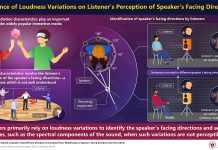
In the world of artificial intelligence, big language models have been stealing the spotlight.
However, MIT researchers believe that smaller models deserve attention, especially for widely deployed natural language applications.
These researchers have developed an innovative approach that addresses the challenges of inefficiency and privacy associated with large text-based AI models.
Their logic-aware model outperforms models 500 times its size in certain language understanding tasks, all while maintaining privacy and robustness.
Let’s delve into the details of their groundbreaking study.
To empower smaller models, the researchers harnessed the concept of “textual entailment.” This approach helps models understand various language tasks by determining if one sentence implies the truth of another.
By training an “entailment model,” which proved to be less biased than other language models, the researchers enabled the smaller models to adapt to different tasks without additional training. This technique, known as zero-shot adaptation, significantly improved the models’ performance.
Natural Language Understanding (NLU) plays a crucial role in various applications. Sentiment classification, for example, aims to determine the sentiment conveyed by a piece of text. Similarly, news classification involves inferring the topic of a news article from its content.
The researchers realized that many NLU tasks could be reframed as entailment tasks, making their approach highly versatile.
MIT’s 350M-parameter entailment models, trained without human-generated labels, outperformed supervised language models with billions of parameters.
This achievement has the potential to revolutionize AI and machine learning, offering a more scalable, trustworthy, and cost-effective solution to language modeling. Furthermore, the researchers employed “self-training,” a technique where the model uses its own predictions to teach itself, enabling learning without human supervision. This method improved performance on various tasks and outperformed other state-of-the-art models.
Self-training can sometimes lead to incorrect or noisy labels, which can harm performance. To address this, the researchers developed the SimPLE algorithm.
SimPLE enables the review and modification of the pseudo-labels generated during the initial learning phase, enhancing the quality of self-generated labels. This approach not only improved language understanding but also made the models more robust against adversarial data.
MIT researchers have successfully demonstrated the effectiveness of smaller language models in language understanding tasks.
By leveraging textual entailment and self-training techniques, these models surpassed their larger counterparts in certain benchmarks.
This breakthrough paves the way for more sustainable, privacy-preserving AI technologies. As the field of language models continues to evolve, this research offers a promising and efficient approach to training compact yet high-performing models.



